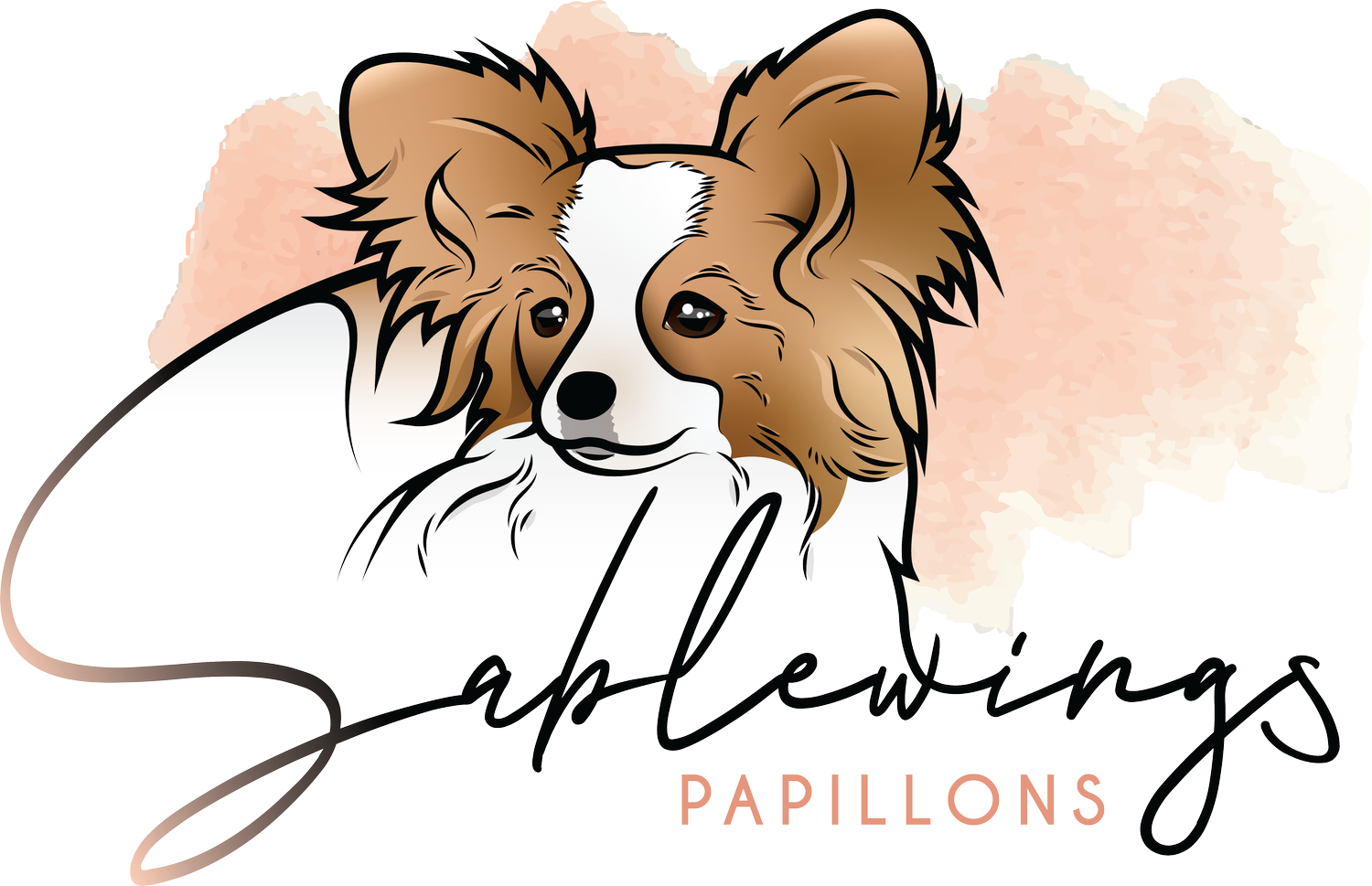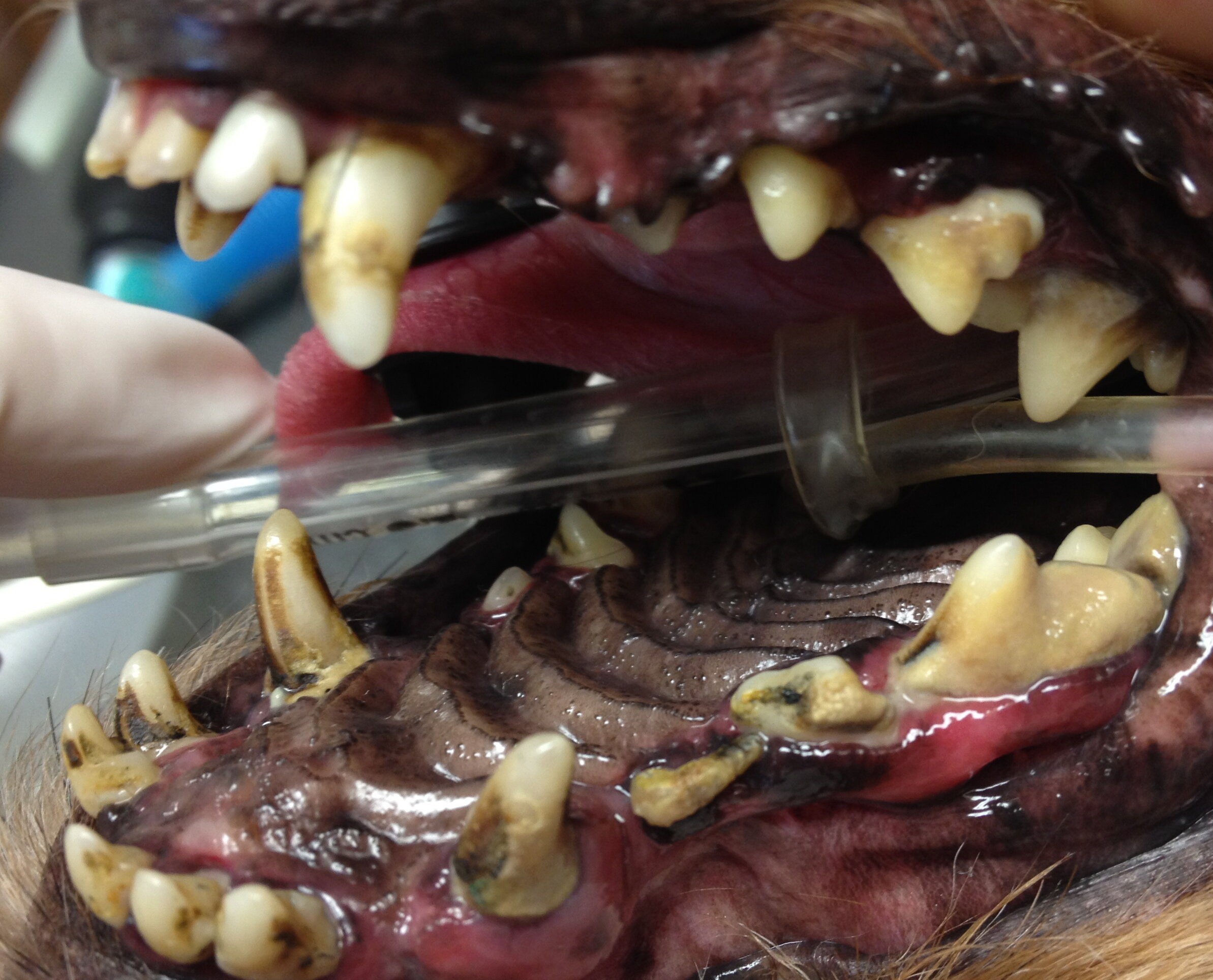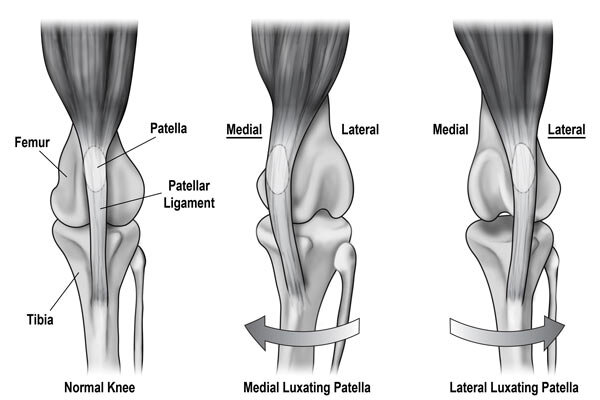Papillon Health Testing
All of the Papillons at Sablewings are examined by both a licensed veterinarian and theriogenologist at least once a year. They are screened for Papillon-specific and non-specific genetic mutations through GensolDx, Optimal Selection or Embark and I make all results public. Generally I choose to avoid line breeding and only select dogs to breed that yield litters with very low Coefficients of Inbreeding. However, I do not wish to vilify line-breeding as it can be another important tool for producing healthy dogs that I may utilize at some point [if you’d like to nerd out and learn more, see the very mathematically dense book Animal Breeding Plans by Jay Lush, who is the father of modern animal breeding science].
Papillons with a CHIC number have health results completed to the point that they could be submitted to the Canine Health Information Center for public viewing. CHIC registration means the dog has been screened for every disease recommended by the Papillon Club of America and those results are publicly available in the OFA database and the Papillon Club of America genetics statistics page.
Papillon Health Risks
Before adding any Papillon to your family, please take your time and do your research. In general, Papillons are a healthy breed. However they do tend towards the following health risks:
Dental Disease
Dental disease is almost never mentioned by many breeders but it is an issue you are 100% likely to face with a toy dog and I consider it to be an owner’s number one health risk and probable largest expense. Some dogs may be more predisposed to dental issues, but all Papillons are at risk of dental disease with most diets and lifestyles. Dental disease can and will lead to costly tooth extractions or root canals and no insurance plan currently covers this. Dental disease has been implicated in heart disease, which is the leading cause of death in Papillons according to all major pet insurance carriers. I cannot stress enough how important it is to be aware of your dog’s teeth throughout his entire life. Dental disease is not an issue breeders screen for or guarantee against, as it is so dependent on lifestyle and hard to improve in a dog breed this small, but it is an issue every potential toy dog owner should be aware of. There are many schools of thought and diets on how to mitigate dental plaque build-up and it is important to make a plan for your dog’s teeth and continually check that his teeth and gums look healthy. No matter how much health testing goes into your future Papillon, remember that dental disease will probably be your greatest risk.
Luxating Patella
Read my thoughts on luxating patella.
Also called “slip knee,” luxating patella (LP) is an orthopedic condition where the patella slips out of the groove in which it is meant to stay in, often because both the trochlear groove is too shallow and because something has caused the mechanism of the quadriceps action to be not quite right. It is a very complex, polygenic issue that is largely environmental. The form of LP common in toy breeds is called medial luxation. This form of LP comes in 4 grades of severity and can become detectable in later puppy-hood or adulthood. Grade 1 LP detected in early puppy-hood still has a significant chance of resolving itself as the puppy completes growing, so puppies should not be tested for this before 1 year of age unless they are symptomatic. (My own repro vet recommends not having a puppy tested for LP until they are at least 9 months old, as many vets only receive a 30 minute instruction in school on how to perform the exam and risk damaging a young puppy’s knee by testing.) Grades 3-4 usually require a surgery. After surgery the dog usually goes on to live a symptom-free life, however the surgery is quite expensive. This is yet another great reason to have pet insurance on your puppy, as insurance will cover this surgery.
NAD (Neuroaxonal dystrophy)
Warning: This is difficult to watch.
This refers to a genetic mutation believed to have originated in the Papillon breed which causes neuroaxonal dystrophy, a neurodegenerative disease. The disease is characterized by symptoms including head tremors, wobbling gait and inability to stand or walk. Symptoms appear at a very young age, usually between 1-4 months, and is clinically characterized by severe axonal swelling with progression to cerebella ataxia, blindness and deafness. Most dogs with the disease do not survive beyond 1 year of age. The mode of inheritance is autosomal recessive. This means a dog with one copy of the mutation (carrier status) can be safely bred to a dog with no copies.
PAP1_PRA
Progressive retinal atrophy (PRA) comprises a group of genetically inherited diseases affecting dogs of various breeds. PRA is characterized by retinal degeneration and progressive loss of vision culminating in blindness. PRA is known to affect over 100 breeds. Causative gene mutations have been identified in several breeds, but some of them are still unidentified. PRA affecting the Papillon and Phalène breeds is caused by a mutation in the CNGB1 gene. The mode of inheritance is autosomal recessive.
Osteochondrodysplasia
A new potential disorder in the Papillon breed, these are inherited disorders of bone and cartilage development, originally found in the Miniature Poodle. Affected dogs suffer from an early-onset form of osteochondrodysplasia characterized by stunted growth, misshapen limbs, and abnormal movement. The mode of inheritance is autosomal recessive.
cord1-PRA/crd4
Cone-rod dystrophy 1 (cord1-PRA) is a form of progressive retinal atrophy (PRA), where the photoreceptors of the eye (i.e. cone and rod cells) degenerate usually causing blindness. The genetic risk factor predisposing a dog to the disease has been found in the Dachshund, English Springer Spaniel, Curly Coated Retriever, Papillon, and Phalene. The clinical significance of this mutation in dogs that lack Dachshund ancestry is not yet clear.




